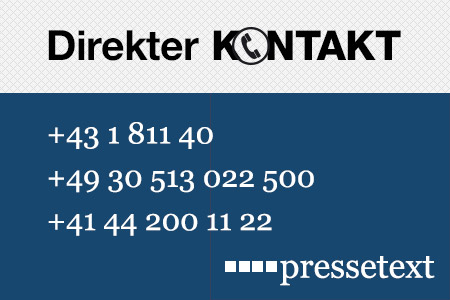Heavy smart phone use can damage arm nerves
Study presented at the 3rd Congress of the European Academy of Neurology
Amsterdam (ptp026/27.06.2017/12:00) Our world is no longer conceivable without smart phones. In 2012, a total of 1.06 billion people worldwide made use of the advantages of mobile communication. By 2016, a mere four years later, that number had doubled to 2.1 billion. US market researchers have determined that we surf, like and text an average of 145 minutes a day. Besides being a strain on the eyes and on powers of concentration, this activity puts big demands on the motor functions of the arm and hand. After all, smart phone users tap their touchscreen an average of 2,617 times a day. Heavy users chalk up 5,427 taps a day - or projected over a year, about two million taps.
Turkish researchers have investigated whether these extreme finger acrobatics can have negative effects on hand and arm nerves. Dr Faik Ilik, from Baskent University and Dr Huseyin Buyukgol, from Karatay University: "The median nerve is the main nerve responsible for the muscle movements we execute while using smart phones. We know that frequent repetition of certain movements can result in carpal tunnel syndrome and wanted to find out whether smart phone use might have the same kind of effect." To this end, the researchers divided the 62 study participants into three groups: 22 made use of conventional mobile phones without computer functions while 19 made moderate use of smart phones and 22 others heavy use. The participants were then asked to assess any pain or other problems on a visual scale (VAS) and with a special questionnaire for recording complaints of the arm, shoulder and hand (Quick DASH - Disabilities of the Arm, Shoulder, Hand). In addition, electro-physiological measurements were taken to determine median nerve conduction.
Not all smart phone users will "like" the results presented at the 3rd Congress of the European Academy of Neurology (EAN) in Amsterdam. Dr Ilik: "It turned out that the use of a classic mobile phone rarely has negative effects on the sensory functions of the median nerve or on motor conduction." Heavy use of a smart phone, for its part, can have an unfavorable effect on the median nerve." Thus, mobile phone users classified their complaints with an average Q-Dash score of 16.63. Moderate smart phone users were somewhat lower than that whereas hard-core users had a score of 19.80. In addition, motor conduction for heavy surfers was about ten per cent below the value for moderate users. To rule out the possibility of individual factors falsifying the results, the study authors compared not only the groups of participants amongst each other but also ascertained the differences between the hand holding the device and the other hand. The same picture emerged there too: Nerve conduction in the dominant hand among heavy users was about twelve per cent less than for the hand subject to less strain.
Sources: 3rd EAN Congress Amsterdam 2017, Abstract Ilik, et al. Effects of smart phone use on the median nerve; Mobile Touches: A Study on Human and their Tech, 2016
(end)| Aussender: | Bettschart & Kofler Kommunikationsberatung GmbH |
| Ansprechpartner: | Dr. Birgit Kofler |
| Tel.: | +43 676 63 68 930 |
| E-Mail: | kofler@bkkommunikation.com |
| Website: | www.bkkommunikation.com |


